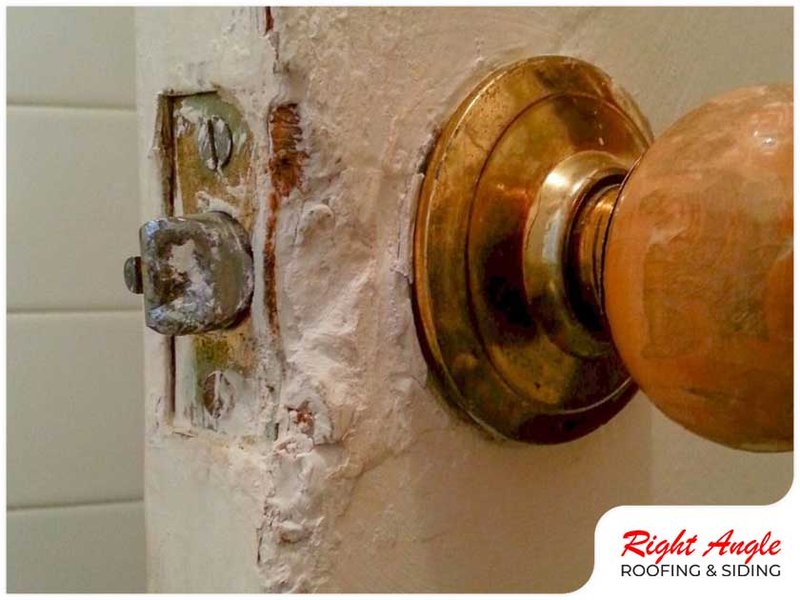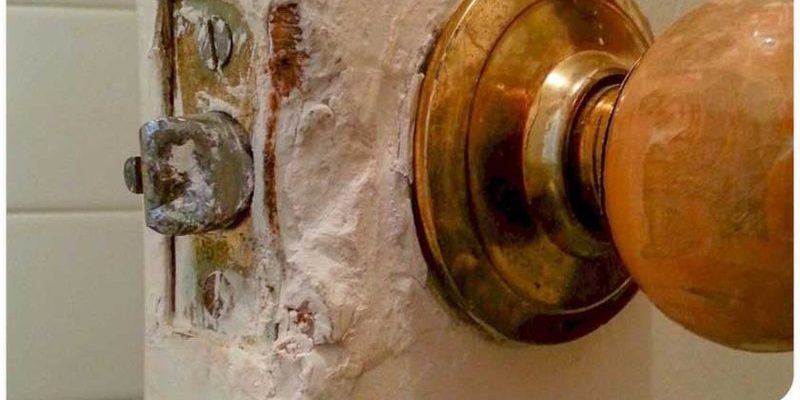
Honestly, wood can be a bit dramatic. Just a little more humidity or a change in the weather, and boom—things get tight. It’s not just old houses with creaky floors; brand-new construction, even with top-notch Yale locks, Schlage door hardware, or those clever soft-close cabinets, isn’t immune. The culprit? Moisture in the wood, slowly working its way out as your home finds its balance. Let me explain how to handle hardware that’s sticking because of wood swelling, and keep your home running smoothly while everything settles in.
Why Does Wood Swell in a New Home?
You might be wondering why things start sticking just as you’re settling in. Here’s the thing: wood is a natural material, and no matter how advanced the builder or fancy the hardware, it’s still going to react to its environment. When wood takes in moisture from the air, it can expand—sometimes a little, sometimes enough to jam a door so you feel like you’re breaking into your own pantry.
This is especially common in new homes, where building materials haven’t fully acclimated to the local climate. During construction, wood can absorb extra moisture from everything—concrete drying out, paint curing, even the weather outside. As seasons change and your heating or AC kicks in, all that moisture starts to move. The result? Swollen doors, drawers, and windows that make hardware feel sticky or out-of-sync.
It’s not just doors, either. Window sashes, closet bi-folds, and even fancy built-in cabinetry can all fall victim. If you notice that your Schlage handles or Yale locks seem harder to turn, it’s probably not a code or battery issue—it’s the wood shifting around them. Understanding this quirky dance between wood and humidity is the first step to troubleshooting those annoyances.
How to Spot Hardware Sticking Caused by Wood Swelling
Not every stubborn latch is a swelling problem—sometimes it’s a simple installation or alignment issue. But there are a few classic signs that scream “this wood is swollen!” One giveaway is if things were working well at first, but became sticky as the weather changed or the seasons shifted.
Here’s what to look for:
- Doors that drag or stick along the top, side, or hinge edge. You might see rubbed paint or even a visible gap shrink.
- Window sashes that won’t budge, or lock hardware that suddenly feels misaligned.
- Cabinet drawers that need extra effort to open or close. Sometimes the metal rails or soft-close features don’t line up anymore.
If you’ve just moved in and multiple doors or windows start acting up around the same time, odds are good it’s the wood swelling—not a defect in the hardware. Unlike a remote that needs a battery swap or a reset, wood can’t just be “paired” with dry air overnight. It takes patience, a keen eye, and sometimes a touch of troubleshooting.
Quick Fixes: Easing Stuck Doors and Windows
When you’re battling a sticky door, every inch counts. Let me walk you through some simple things to try before you call in a carpenter. Honestly, most of these fixes use tools you probably already have lying around.
- Tighten the screws: Sometimes, wood swelling loosens hardware screws. Grab a screwdriver and snug them up (but don’t overdo it and strip them).
- Lubricate the hardware: Spritz a bit of silicone spray or rub a dry bar of soap on the sticking edge. It sounds basic, but it can help hinges, locks, and even sash tracks glide more easily.
- Check for paint or finish build-up: New homes sometimes get a bit of extra paint or finish gunk around hinges and locks, which can make things stickier with swelling. Gently scrape away any blobs or drips that look out of place.
If you hear scraping or feel a spot where wood is rubbing hard, use a sheet of fine sandpaper. Sand just enough to smooth out the high spot—aim for subtlety rather than a big shaving session. For window locks or cabinet hardware, make sure nothing’s shifted so much that the catch or latch is out of sync. Adjust if you can.
Sometimes, a little troubleshooting is all you need to “reset” how your hardware fits. Think of it like syncing a remote—it won’t fix the swelling, but it buys you time until the wood settles.
Long-Term Solutions for Sticking Hardware in New Construction
Quick fixes can help, but if things keep sticking, you might need a more permanent solution. Here’s where it pays to take your time—wood movement is a stubborn cycle, but you can outsmart it.
- Control indoor humidity: Run a dehumidifier, especially during humid months or if your home is still “drying out.” Ideally, keep humidity between 40% and 60%.
- Wait before trimming: Don’t rush to plane or cut down doors right away. Wood will settle as the seasons change, and trimming too soon can backfire, leaving gaps when everything dries out.
- Seal exposed wood: Use a clear sealer or paint on door and window edges. This slows down moisture movement, helping maintain a steady fit.
- Adjust hardware if needed: Many brands, like Schlage and Yale, make it easy to slightly move strike plates or latch locations. A few millimeters can make a world of difference.
It can be tempting to break out the power tools, but patience pays off here. If you’re thinking about “resetting” or “re-pairing” screws, always start with the least invasive fix and watch how the door or window behaves over the next few weeks.
Comparing Hardware Types: Which Ones Are Most Affected by Wood Swelling?
Here’s something not everyone realizes: not all hardware reacts the same to wood swelling. Big, chunky handles or traditional mortise locks set deep in the door can be more vulnerable, because there’s less room for wood to move. Lightweight, surface-mounted hardware or newer “floating” designs can be a little more forgiving.
For example:
- Heavy mortise locks (like older Yale designs): Prone to binding if the wood swells around them. The precise fit is helpful for security, but less so for seasonal changes.
- Surface-mounted deadbolts (like many Schlage styles): Easier to adjust, and you can often move strike plates or keepers to compensate for swelling.
- Cabinet soft-close systems: These can become out of sync, especially if the rails shift as the wood expands. Sometimes simply loosening and re-tightening the mounting screws resets the alignment.
Honestly, if you know you’re in a humid area or your home is brand-new, it’s worth looking at hardware that allows for easy adjustment. Think of it as “future proofing” against the slow-motion chaos of a house settling in.
When Should You Call a Pro?
Let’s be real—sometimes no amount of DIY troubleshooting does the trick. If a door won’t budge, locks won’t code correctly, or you can’t “repair” an out-of-sync window latch, it’s okay to bring in help. Here’s when it’s smart to get a pro involved:
- Doors or windows are dangerously stuck, or you can’t open them safely (especially an egress window or main entry).
- There’s visible damage to the wood or hardware—splits, cracks, or broken mechanisms that a simple adjustment can’t fix.
- You’ve tried everything and it’s not improving after a full season or with humidity controls in place.
Most local carpenters, hardware installers, or even brand service reps (Schlage, Yale, etc.) see these issues all the time in new construction. Pros can code, reset, and physically trim or adjust hardware in a way that keeps everything working as your home continues to dry out and settle.
Preventing Hardware Problems as Your Home Settles
The best time to troubleshoot is before things get stuck. If you’re still in the move-in phase, or waiting for construction to finish, you can do a few things to get ahead of swelling woes:
- Gradually condition the air using your HVAC or a dehumidifier. Don’t go from construction humidity to desert-dry conditions overnight—let the home adjust slowly.
- Check all hardware connections once everything’s in place. Look for screws that could use tightening, or plates that aren’t flush to the wood surface.
- Keep an eye on windows, doors, and cabinets during major weather changes, like the start of a wet season or a cold snap. Catching a sticky spot early makes troubleshooting easier.
Many people treat a new home like a set-it-and-forget-it project, but a bit of routine attention can make all the difference in keeping your hardware code-synced and operating smoothly.
Closing Thoughts: Letting Your Home Find Its Balance
Here’s what it all comes down to: living with wood is like learning a new rhythm. In new homes especially, a little swelling and sticking is part of the process as everything settles and syncs up with its surroundings. Whether you’re working with high-tech Schlage locks or a classic Yale deadbolt, patience and a few simple troubleshooting steps go a long way.
By paying attention to moisture, taking care of small adjustments, and giving the wood time to reach its happy place, you’ll find those sticking doors and drawers eventually become just another “new house story.” And if you ever feel in over your head, there’s always a pro who’s seen it all and can get things moving smoothly again.
